Medical expert of the article
New publications
Preparations
Ointments for atopic dermatitis
Last reviewed: 03.07.2025

All iLive content is medically reviewed or fact checked to ensure as much factual accuracy as possible.
We have strict sourcing guidelines and only link to reputable media sites, academic research institutions and, whenever possible, medically peer reviewed studies. Note that the numbers in parentheses ([1], [2], etc.) are clickable links to these studies.
If you feel that any of our content is inaccurate, out-of-date, or otherwise questionable, please select it and press Ctrl + Enter.
For the complex treatment of allergic rashes and plaques on the skin with atopic dermatitis, drugs are often prescribed that are used externally. It should be remembered that to achieve a positive result, it is necessary to use only those drugs that your doctor prescribed after diagnosing the disease.
In order to evaluate the effectiveness of the product, a pharmacological test is first performed. A small drop of ointment is applied to one of the affected areas of the skin. How your skin reacts to the drug should be checked first after twenty minutes, then after two and twelve hours. If the redness and inflammation have subsided, then you can safely continue the therapy.
Indications ointments for atopic dermatitis.
Indications for the use of ointments are the following symptoms of allergic dermatitis:
- The skin becomes dry and rough.
- Itching appears on the skin.
- The skin turns red and swells.
- Red spots with clearly visible edges may appear.
- Plaques appear, which, due to constant scratching, turn into erosions.
If you experience the above symptoms, don't be lazy and go to a dermatologist. He will diagnose and prescribe the ointment that will be most effective in your case.
Release form
It is the ointment, as a form of release, that is considered quite popular in the complex therapy of atopic dermatitis, since the active substances included in such products act precisely on the lesion. They are quite easy to use and apply. In addition, non-hormonal ointments are recommended for use in therapy not only during pregnancy, but also for children under one year of age.
Names of ointments for atopic dermatitis
Medicines that are used externally and help get rid of allergic rashes are divided into three large groups:
- Nourishing ointments that moisturize the skin.
- To reduce itching and combat inflammation.
- Bactericidal.
To slow down the development of the inflammation process, reduce the intensity of unpleasant sensations (burning and itching), usually use non-hormonal based products or corticosteroids. They should be applied only during periods of exacerbation and used for short periods of time (no more than fifteen days).
Ointments that moisturize and nourish the skin can be applied to the skin every day. If the skin is extremely dry, it is best to apply them twice a day.
Very often, rashes associated with allergic diseases are complicated by various infectious inflammatory processes of the skin; in such cases, antibacterial agents will come to the rescue.
 [ 7 ], [ 8 ], [ 9 ], [ 10 ], [ 11 ]
[ 7 ], [ 8 ], [ 9 ], [ 10 ], [ 11 ]
Hormonal ointments for atopic dermatitis
Hormonal preparations are recommended by specialists as effective remedies for allergies only in one case: if the patient does not experience relief after therapy with conventional medications. It should be understood that such ointments can only be prescribed by a specialist, do not use them on your own under any circumstances.
Hormonal agents often cause pigmentation on the skin (especially if used for a long time), and also lead to adrenal insufficiency and skin atrophy. The most hormonal ointments for the treatment of allergic rashes in the form of dermatitis today are the following drugs.
Celestoderm. Ointment based on betamethasone valerate. Relieves the main manifestations of allergies and helps reduce inflammation.
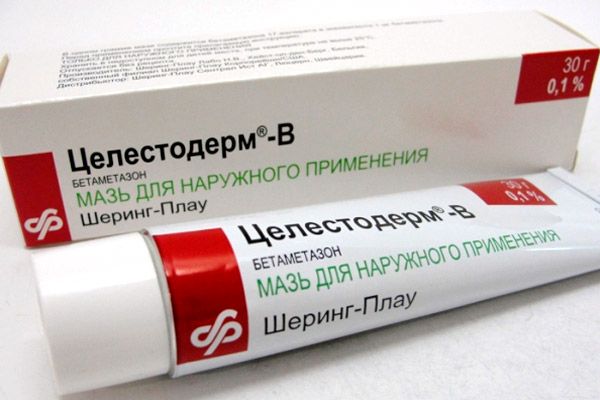
The ointment does not leave greasy marks and does not have an unpleasant smell, so it can be used not only when you are at home. Use a small amount of ointment, applying it to clean, dried skin one to three times per 24 hours. It is prohibited to use the drug if there is a possibility of increased allergic reactions due to intolerance to the components. Do not use for therapy of pregnant women, nursing mothers and infants under six months.
The following side effects may occur during the use of Celestoderm: folliculitis, skin reactions (itching or irritation), hypopigmentation, secondary infections, striae, acne-like rashes, maceration.
Flucinar. A fatty translucent ointment containing the active ingredient fluocinolone acetonide. Thanks to it, the drug combats itching, allergic reactions, and inflammation. The active ingredient inhibits the synthesis of leukotrienes and prostaglandins, thereby inhibiting inflammatory reactions.
Apply in small quantities only to the affected areas once or twice in 24 hours. It is not recommended to continue therapy longer than fourteen days. Apply very carefully to the skin of the face. For the treatment of children (from the age of two), the drug is applied once a day after the doctor's recommendation.
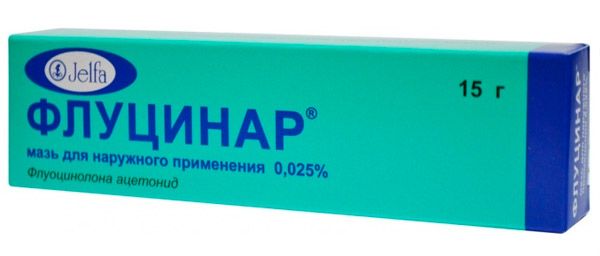
Patients with tumors or precancerous diseases of the skin, viral or fungal skin diseases, vulgar and rosacea, hypersensitivity to fluocinolone are prohibited from using the product. Do not use in the treatment of infants and pregnant patients.
When used, some unpleasant symptoms may occur: urticaria, folliculitis, skin atrophy, melasma, cataracts, depression, acne.
Advantan. A local antiallergic agent containing the active component methylprednisolone aceponate. Helps to get rid of allergic skin reactions and inflammation, as well as relieve additional symptoms (burning, swelling, itching).
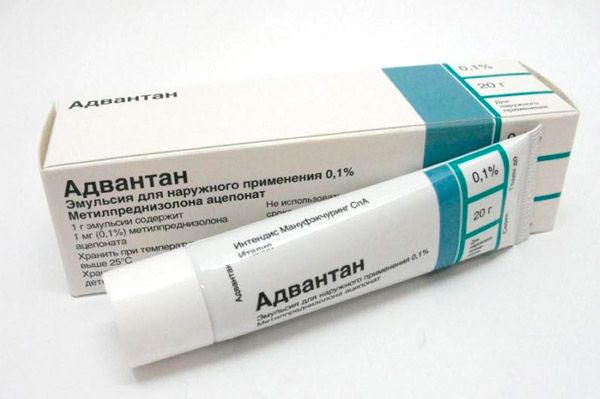
Apply in small quantities only to the affected skin once every 24 hours. After use, allow to absorb on its own. Doctors allow using even for the treatment of infants (over four months). The drug is prohibited for patients with cutaneous tuberculosis, rosacea, perioral dermatitis, skin diseases caused by a viral infection. Do not apply during treatment of pregnant women.
Usually, this remedy is well tolerated, but in rare cases, unpleasant symptoms may still appear: hypertrichosis, folliculitis, depigmentation, erythema, rashes, itching, burning, atrophy.
Hydrocortisone ointment
Recently, more and more specialists are inclined to believe that Hydrocortisone ointment is the best drug for the treatment of atopic dermatitis, especially in children. This is also proven by some studies that were conducted by English scientists.
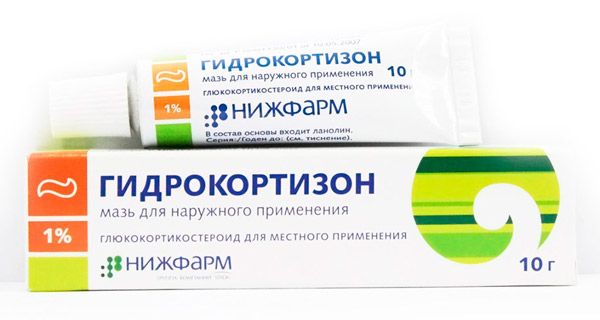
The drug is the first glucocorticosteroid used by doctors to treat various types of dermatitis. The drug contains the active substance hydrocortisone, which helps suppress the functions of tissue macrophages and leukocytes.
The dosage is prescribed by the attending physician in accordance with the individual situation. Patients with fungal, viral and infectious skin diseases, cutaneous tuberculosis and syphilis, rosacea, tumors, vulgar acne are prohibited from using the drug. In no case should it be used for therapy of pregnant women.
The use of the ointment leads to some side effects: latent diabetes mellitus, dysmenorrhea, hypocalcemia, weight gain, euphoria, depression, nervousness, pseudotumors, hypernatremia, fluid retention, bradycardia, thrombosis, vision loss, myopathy, allergy, leukocyturia.
Non-hormonal ointments for atopic dermatitis
Non-hormonal drugs act on the skin more gently, but are not always as effective as hormonal drugs. As a rule, such drugs are used to treat atopic dermatitis in children.
Radevit. A product for improving tissue regeneration and trophism, which contains the following active ingredients: ergocalciferol, retinol palmitate, α-tocopherol acetate. The drug has antipruritic, anti-inflammatory, moisturizing, softening, reparative effects.
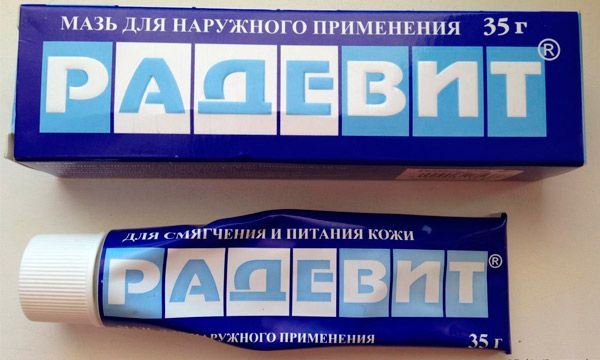
Apply a thin strip of ointment to the affected skin twice a day. Do not rub. If the skin peels too much, you can use a bandage. Patients with hypervitaminosis A, E, D, intolerance to the components of the drug are prohibited from using it. Do not use during pregnancy.
Very rarely, allergies (hives, rash, itching) may occur during the use of Radevit.
Gistan. An antiallergic drug that should not be confused with the hormonal drug Gistan-N. The drug contains the following active ingredients: betulin, dimethicone, lupine, lily-of-the-valley oil, birch buds, spiked speedwell, three-part succession, milkweed, wild pansy, calendula and dropsy.
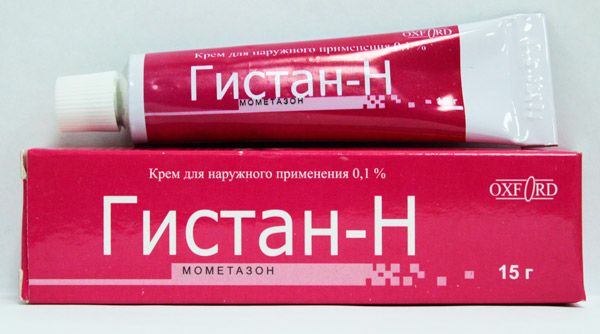
The ointment is applied in a thin strip to the skin with inflammation once every 24 hours. Therapy can last up to four weeks. Do not use for the treatment of pregnant women. Patients with intolerance to the components of the drug are prohibited from using it.
During therapy with Gistan, the following symptoms may appear: prickly heat, striae, acne, paresthesia, itching, skin atrophy, maceration of the skin, hypertrichosis.
Thymogen. A drug used to stimulate local immunity, helps improve tissue regeneration. The drug contains the active substance thymogen. Can be used during the treatment of atopic dermatitis with secondary infection.

It is recommended to use 2 g of ointment in 24 hours. Apply only to inflamed areas with a thin strip. After application, the skin can be covered with a bandage. Use until symptoms disappear, but not longer than twenty days.
Patients with intolerance to thymogen are prohibited from using the drug. Do not use for the treatment of pregnant women. Allergic reactions may occur during therapy.
Zinc ointment
Zinc ointment is an effective remedy for the treatment of atopic dermatitis. It can relieve inflammation and heal rashes in a short time. But experts do not recommend using this remedy if the patient has very dry skin with roughness and peeling.
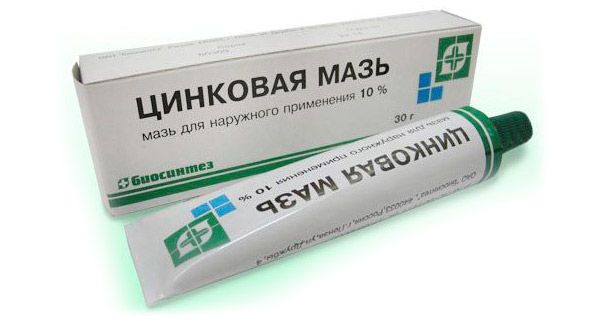
Before applying Zinc Ointment to the affected skin, it must be thoroughly cleaned and dried. Use a small amount of the preparation every two hours. It is possible to apply the ointment up to six times in 24 hours. If it is impossible to use the product so often, you can reduce the application to once (at night), but do not wash it off the skin until the morning.
Patients with zinc oxide intolerance are prohibited from using the drug. No side effects from using the product were found.
Ichthyol ointment
A popular disinfectant and antiseptic drug. The drug contains the active substance ichthyol, which has anti-inflammatory, antiseptic, antipruritic and keratostatic effects. Does not affect gram-negative bacteria.

Spread a thin strip of ointment evenly over the entire surface of the affected skin. Rub in with massage movements until a feeling of warmth appears. Patients with intolerance to ichthyol are prohibited from using the drug. The ointment does not cause side effects, although in rare cases an allergy may occur.
Sulfur ointment
Sulfur ointment is an effective remedy for the treatment of atopic dermatitis in adults and children. As a rule, such a drug contains sulfur, petroleum jelly or purified water. When it gets on the skin, sulfur begins to interact with organic substances, which results in the formation of acid and sulfides. They are distinguished by their antiparasitic and antimicrobial effect.
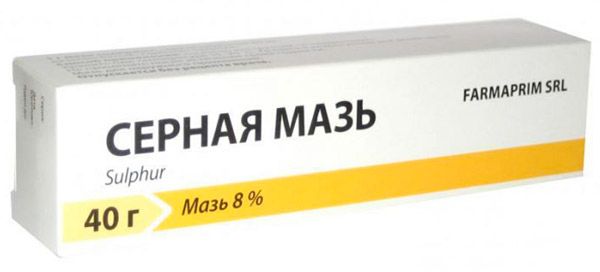
Before applying the ointment to the body, it is necessary to thoroughly wipe the affected area and wipe it dry. Before going to bed, apply a thin strip of the preparation to the skin with dermatitis lesions and do not wash off for 24 hours. Take a bath before reapplying.
Patients with sulfur intolerance are prohibited from using the ointment. It is possible to treat atopic dermatitis during pregnancy. Sulfur ointment causes dryness and redness of the skin, peeling and itching.
Heparin ointment
This drug contains the following active ingredients: benzyl nicotinate, sodium heparin and benzocaine. Heparin is gradually released on the skin and relieves inflammation. It also has an antithrombotic effect. Existing blood clots quickly disappear, and new ones do not appear. Pain is reduced thanks to benzocaine.

Apply a small amount to the affected skin two or three times per 24 hours. The therapy usually lasts from three to seven days. If necessary, the attending physician may extend the course.
Patients with intolerance to the components of the drug, ulcerative-necrotic processes, violations of the integrity of the skin are prohibited from using Heparin ointment. In some cases, use leads to hyperemia of the skin.
Calendula ointment
The composition of the medicine includes the active substance calendula extract, as well as additional components: water and petroleum jelly. The product has an anti-inflammatory, antiseptic, reparative effect. That is why this ointment is often used to treat atopic dermatitis.
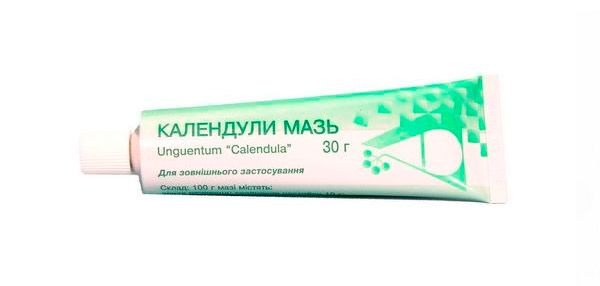
The ointment should be applied in small quantities, without touching healthy skin. If necessary, a bandage can be used. The duration of therapy depends on the patient's condition. People with intolerance to the components of the drug are prohibited from using it. Do not use for the treatment of children under five years of age, as well as pregnant women.
 [ 12 ], [ 13 ], [ 14 ], [ 15 ]
[ 12 ], [ 13 ], [ 14 ], [ 15 ]
Moisturizing ointment for atopic dermatitis
During the treatment of atopic dermatitis, it is very important to properly moisturize and soften the skin, which is often overdried. Special ointments and creams are used for this purpose.
Locobase Ripea. Ointment for restoring elasticity and softness of dry or overdried skin. A cosmetic product used to restore the skin barrier. It has an effective and long-lasting effect.
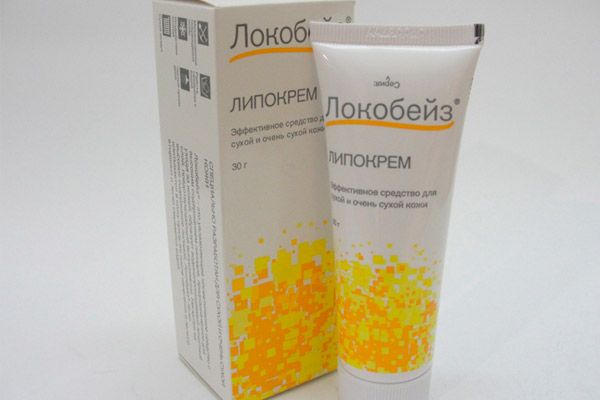
Locobase Ripea is a source of three important components that moisturize the skin, namely: cholesterol, free fatty acids and ceramides. To make dry skin softer, it is enough to apply the ointment once every 24 hours every day. If you use creams or ointments that additionally dry the skin, the number of applications can be increased. The product does not contain fragrances, dyes and preservatives, so it can be used to moisturize children's skin.
Ruzam +. An ointment with anti-inflammatory, antipruritic and antiallergic effects that helps moisturize dry skin with atopic dermatitis. The product helps not only soothe inflamed skin, but also soften it.
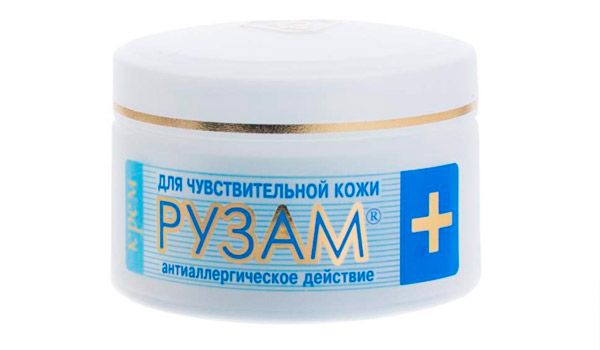
The drug is not hormonal, so it is suitable for treating children and pregnant women. It has a protein nature. It does not cause side effects. Apply a thin strip to the skin, do not rub. Use until the allergy symptoms disappear. The drug is prohibited for use in case of intolerance to its components.
Antipruritic ointments for atopic dermatitis
Often, with atopic dermatitis, patients experience unpleasant itching, which forces them to scratch the inflammation sites and leads to unpleasant complications. Popular antipruritic ointments are used to relieve itching.
Diahil ointment. A popular disinfectant that can be used to relieve itching in atopic dermatitis. The medicine contains active ingredients: simple lead plaster and petroleum jelly.
To obtain a positive result, apply one to three times per 24 hours to the affected areas of the skin. If necessary, a bandage can be used. Patients with intolerance to the components of the ointment are prohibited from using the drug.
 [ 16 ], [ 17 ], [ 18 ], [ 19 ], [ 20 ], [ 21 ]
[ 16 ], [ 17 ], [ 18 ], [ 19 ], [ 20 ], [ 21 ]
Ointment for atopic dermatitis in children
Atopic dermatitis can occur in a child of any age. That is why doctors distinguish three main types of skin allergies in children:
- Infant (up to three years).
- Children (three to seven years).
- Teenage.
Most often, atopic dermatitis affects children aged six months to two years. Therapy for this disease is associated with some difficulties, because it often becomes chronic and can be accompanied by secondary infectious skin diseases.
Ointments for the treatment of atopic dermatitis are used very often, as they help to quickly achieve a positive result. In case of bacterial infection, ointments based on antibiotics are used (for example, Dioxidine ointment, lincomycin ointment).
In acute cases, the doctor may prescribe hormonal agents: Hydrocortisone ointment, Advantan, Flucinar. If the disease occurs with mild symptoms, non-hormonal drugs can be used: Keratolan ointment, Radevit, Zinc ointment, Ichthyol ointment.
Pharmacodynamics
Let us consider the pharmacodynamics and pharmacokinetics of ointments for atopic dermatitis using the popular drug "Celestoderm" as an example.
This drug contains betamethasone, which has an effective anti-allergic and anti-inflammatory effect. It inhibits the release of inflammation mediators and cytokines, thereby disrupting the metabolism of arachidonic acid. Betamethasone also induces the synthesis of lipocortins, has anti-edematous activity, and reduces vascular permeability.
The drug quickly penetrates into the deep layers of the skin and begins to actively act due to its non-greasy ointment form.
 [ 22 ]
[ 22 ]
Contraindications
Depending on which ointment you choose (non-hormonal or hormonal), it may have special contraindications, which you should carefully read in the instructions.
Hormonal ointments are generally prohibited for use during pregnancy, in childhood, and by patients with intolerance to the components of the drug.
Non-hormonal drugs may not have any special contraindications. Due to their natural basis, they are used even for treating infants. But even here, one should not forget about possible manifestations of allergy to the active substances of the ointment.
Attention!
To simplify the perception of information, this instruction for use of the drug "Ointments for atopic dermatitis" translated and presented in a special form on the basis of the official instructions for medical use of the drug. Before use read the annotation that came directly to medicines.
Description provided for informational purposes and is not a guide to self-healing. The need for this drug, the purpose of the treatment regimen, methods and dose of the drug is determined solely by the attending physician. Self-medication is dangerous for your health.

